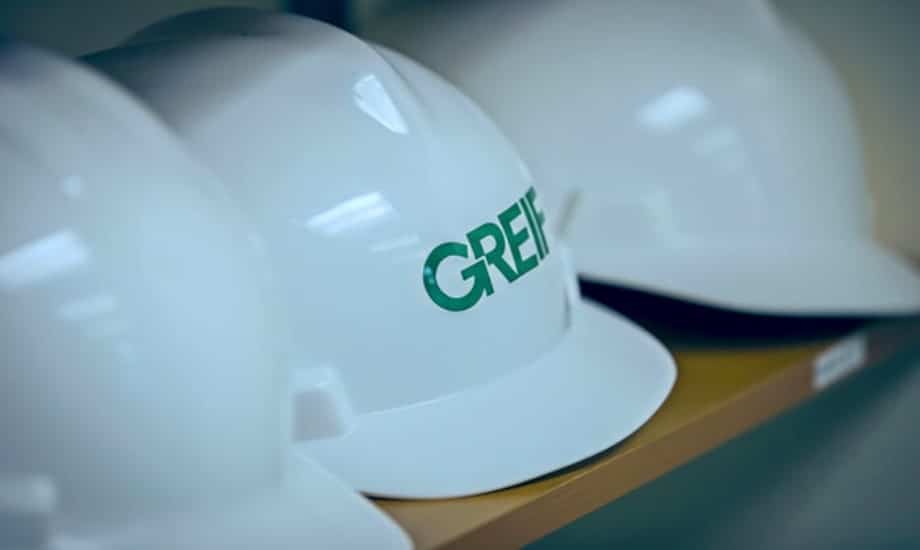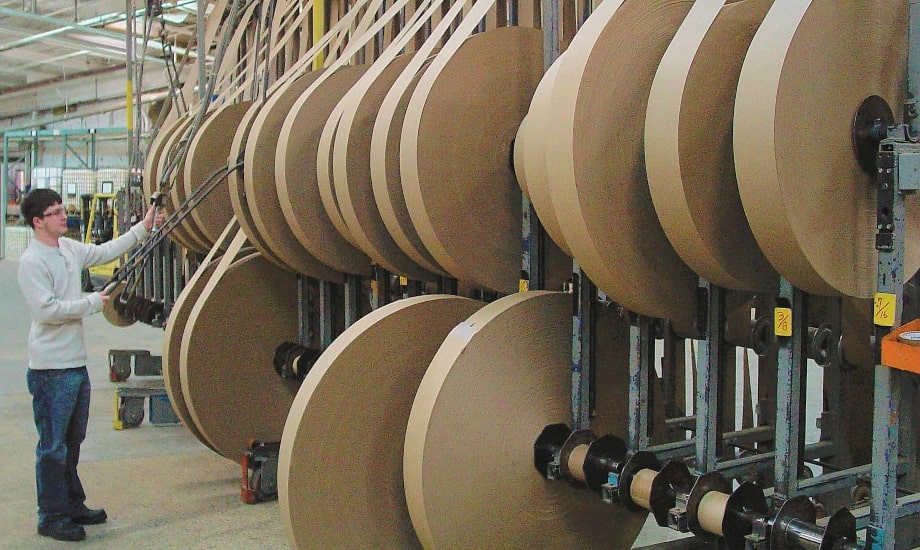Чому вода має значення
As a global manufacturing company, Greif has a responsibility to minimize our water use and improve water quality, particularly in our most water intensive operations. Responsible water management reduces our demand for water as water scarcity and water costs are rising and ensures that water discharge from our facilities is treated and safe to protect the health of the communities in which we operate. Our water management practices simultaneously achieve these aims while creating operational efficiencies and minimizing regulatory risk.
Управління
Only 1%
total water consumed in regions with high water baseline stress
Наші зусилля щодо якості води дозволили нам уже досягти нашої мети щодо скорочення 10% до 2025 року.
Greif monitors Key Performance Indicators (KPIs) to ensure proper treatment of our wastewater. If a treatment incident occurs, the facility manager would observe a change to these KPIs, which initiates an investigation to determine the root cause and resolve the problem. When necessary, Greif engages third-party experts to support our investigations. For example, in 2020 Greif’s Tama mill experienced high biochemical oxygen demand (BOD) and nitrogen concentrations. Greif contracted with a third party to conduct a site inspection and recommend corrective actions. Based on their recommendations, we increased nutrient addition, instituted improved analytical testing to monitor nutrient levels and introduced chemical oxygen demand (COD) testing to receive faster feedback on potential issues.
While Greif’s water impact is predominately in our PPS operations, we take steps to curb water use across all our operations, particularly in water-stressed regions in Latin America, Africa and the Middle East. In these facilities, and across all our operations, we reduce water pressure where it is higher than needed, replace leaky valves and collect and use rainwater when possible. Our Global Industrial Packaging facility in Riyadh, Saudi Arabia implemented many such measures in an effort to reduce and recycle their wastewater, ultimately resulting in a 32 percent reduction in waste to landfill from their facility. Please see our Відходи page for more information on their achievement.
In 2021, we will develop standard environmental data dashboards across our mills to better understand and manage water and effluent, as well as energy data, and continue working to identify water efficiency opportunities.
Цілі та прогрес
In 2017, Greif announced a 2020 goal of 10 percent reduction in kilograms of biochemical oxygen demand (BOD) per metric ton of production, from a 2014 baseline of 1.47, at legacy Greif mills. Our 2017 materiality process led to the creation of new 2025 goals and restating our BOD goal as a 2025 goal. Additionally, in 2021, we plan to create 2030 goals and targets in line with the American Forest and Paper Association.
У 2018 році ми переоцінили наші історичні дані про використання води та БПК, щоб підтвердити нашу базову лінію та припущення для підтримки постійного вдосконалення, пов’язаного з водою. Завдяки цьому процесу ми перерахували базовий показник БПК за 2014 рік до 1,40.
2025 Ціль: до кінця 2025 фінансового року зменшити БПК, що викидається в кілограмах, на 10 відсотків на метричну тонну комбінованого виробництва на заводах Riverville і Massillon, використовуючи перерахований базовий рівень 2014 року.
Прогрес: Since 2017, we have reduced BOD per metric ton of production by 71.8 percent in our legacy Greif containerboard mills. Our significant progress against our BOD goal was enabled by the installation of a wastewater treatment facility at our Massillon mill. Completed in July 2017, the project led to modest improvements in 2017 and far surpassed expectations in 2018. These benefits continued to be realized in 2020.
In 2021, we will continue to track our progress in reducing BOD while controlling specific water use in our mills and reevaluate our goals to include both our legacy Greif mills and Caraustar mills that are now part of our organization. Additionally, in 2021, we will announce new water reduction targets for our mills.
Дані продуктивності
ВОДА*
|
|
2016 фінансовий рік |
2017 фінансовий рік |
2018 фінансовий рік |
2019 фінансовий рік |
2020 фінансовий рік |
|---|---|---|---|---|---|
|
Водозабір (тис. кубометрів)* |
8,420.2 |
9,666.3 |
9,360.8 |
13,864.4 |
12,936.6 |
|
Поверхневі води |
- |
9,242.7 |
8,630.0 |
10,266.8 |
10,132.0 |
|
Грунтові води |
- |
423.6 |
730.7 |
3,597.6 |
2,804.6 |
|
Дощова вода |
- | - | - | - | - |
|
Стічні води |
- | - | - | - | - |
|
Муніципальна вода† |
- | - | - | - | - |
|
Скидання стічних вод (тис. кубічних метрів)** |
7,961.4 |
8,983.2 |
9,316.2 |
12,403.92 |
11,935.1 |
|
Річка Джеймс |
- |
8,788.8 |
8,907.1 |
7,949.5 |
8,375.0 |
|
Місто Масійон |
- |
191.6 |
407.1 |
424.0 |
355.8 |
|
Річка Тускарава |
- |
2.8 |
2.0 |
2.5 |
8.8 |
|
Струмок Світвотер^ |
- |
- |
- |
0.0 |
0.0 |
|
Кобб Каунті WWTP^ |
- |
- |
- |
844.9 |
855.0 |
|
Столичний каналізаційний район Цинциннаті^^ |
- |
- |
- |
37.6 |
40.6 |
|
Столичний каналізаційний район Мілуокі^^ |
- |
- |
- |
349.0 |
335.9 |
|
Санітарний район округу Лос-Анджелес WWTF^^ |
- |
- |
- |
196.8 |
189.1 |
|
Трі Майл Крік^ |
- |
- |
- |
0.0 |
- |
|
Village of Baltimore WWTF** |
- |
- |
- |
0.0 |
6.1 |
|
West Branch Paw Paw Creek** |
- |
- |
- |
697.1 |
581.4 |
|
Регіональна очисна станція Сан-Хосе-Санта-Клара^^ |
- |
- |
- |
288.1 |
334.2 |
|
Центральна очисна станція такоми^^ |
- |
- |
- |
6.9 |
8.5 |
|
Місто Фітчбург WWTP^ |
- |
- |
- |
322.6 |
309.0 |
|
Річка Айова** |
- |
- |
- |
291.8 |
364.9 |
|
Вишневе озеро** |
- |
- |
- |
597.8 |
550.4 |
|
Притока Айови** |
- |
- |
- |
58.0 |
78.6 |
|
Біохімічне споживання кисню (тис. кг) |
1,050.4 |
890.4 |
204.2 |
3,508.3 |
3,457.1 |
|
Загальна кількість завислих твердих речовин (кг) |
546,857 |
465,098 |
349,003 |
1,224,442 |
1,045,928 |
|
Фосфор (кг) |
5,728 |
4,991 |
6,617 | 4,708 | 4,445 |
|
Виробництво (MT) |
665,000 |
690,000 |
713,336 |
1,729,062 |
1,661,228 |
|
Норма витрати (м3/MT) |
12.7 |
14.0 |
13.1 |
8.02 |
7.79 |
Примітки:
- Дані за 2015–2018 роки взято з двох паперових фабрик Грейфа, одна з яких розташована в Рівервіллі, штат Вірджинія, а інша — у Массійоні, штат Огайо. Історично на ці дві паперові фабрики припадало понад 901 TP3T глобального водного сліду Грайфа. Вони черпають воду з річки Джеймс та місцевих колодязів відповідно. Дані за 2019 рік включають 12 колишніх млинів Caraustar, які були придбані та інтегровані в 2019 році. Усі дані за 2019 рік є даними за повний рік. Якість стічних вод, що скидаються з наших млинів, відповідає вимогам дозволу. Жодна скинута вода не використовувалася іншою організацією. WWTP = Станція очищення стічних вод.
- Дані за 2019 фінансовий рік включають станцію очисних станцій Mobile Wright Smith, яка була закрита в 2020 році та перерахована для належного врахування скидів West Branch Paw Paw Creek за 2019 фінансовий рік.
Обробляється первинним освітленням, вторинним освітленням і аерацією перед прямим викидом.
Очищені за допомогою попередньої обробки стічних вод, включаючи видалення розчинної БСК.
Очищаються за допомогою попереднього очищення стічних вод лише твердими речовинами.
† Greif наразі не відстежує забір комунальної води.
|
Використання води в регіонах із високим або надзвичайно високим базовим нестачею води |
2020 фінансовий рік |
|---|---|
|
Забір води (тис. кубометрів) |
170.4 |
|
Відсоток загального водозабору |
1% |
|
Спожита вода (тис. кубічних метрів) |
162.7 |
|
Відсоток загальної кількості спожитої води |
1% |
Improving Our Wastewater
In 2017, Greif’s Massillon, Ohio mill completed construction of a water treatment facility to significantly reduce the biological oxygen demand (BOD) of the plant’s discharge water before being returned to the municipal treatment plant. High BOD levels promote bacteria growth, release odors and must be controlled using chemicals. Since installing the treatment facility, we reduced BOD discharged to the municipal system by over 96 percent, contributing to our 2025 BOD reduction goal. This also eliminated several chemicals that were previously needed to control bacteria.

Water Reduction at Our Baltimore, Ohio Mill
In 2020, Greif’s Baltimore, Ohio mill transitioned from direct discharge of treated wastewater to a local creek to discharging pretreated wastewater to a local water treatment facility that uses a state-of-the-art membrane treatment system to further treat water. This shift both reduced overall water discharge and supported returning cleaner water to the community. Greif engaged with local and state governments over the course of multiple years to design and approve the project, which was approved in 2019 and completed in October 2020. The project will reduce water consumption by 550,000 m3 per year. The community benefits from a cleaner surface water since several tons per year of biological oxygen demand and total suspended solids were also removed from the local creeks because of this transition.

ОСНОВНІ СТАЛІСТЬ
Only 1%
Total water consumed in regions with high water baseline stress
Наші зусилля щодо якості води дозволили нам уже досягти нашої мети щодо скорочення 10% до 2025 року.



